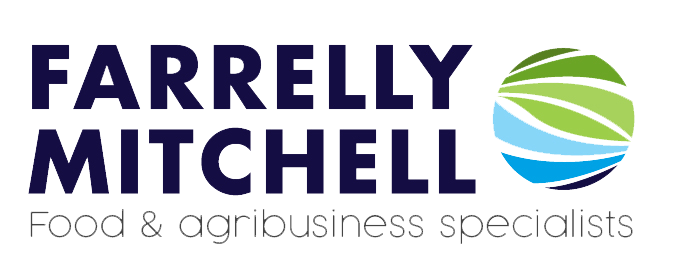Proper livestock feed storage is a critical aspect of farm management that directly impacts the health and productivity of animals. Maintaining a vigilant approach to feed storage management can help farmers preserve the nutritional value of their feed, prevent contamination, and ultimately support the long-term success of their operations.
This article will provide a comprehensive guide to the best practices in livestock feed storage, highlighting common challenges and offering solutions to mitigate risks. By understanding and implementing these practices, farmers can ensure safe and nutritious feed for their animals, limit economic losses, and improve farm profitability.
Moisture control
Moisture is one of the most significant factors affecting feed quality during storage. Excess moisture can lead to spoilage and nutrient degradation, all of which compromise the safety and nutritional value of the feed. Excess moisture also leads to the growth of mould. Mould not only spoils feed but also produces mycotoxins, which are toxic compounds that can cause serious health problems in livestock, including reduced growth rates, reproductive issues, and even death.
To prevent moisture-related issues, it is crucial to store feed in a way that minimises exposure to humidity and water. Here are some best practices for moisture control in feed storage:
- Use airtight containers: Feed should be stored in airtight containers that prevent moisture from entering. These containers should be made of durable, non-porous materials that are resistant to rust and corrosion. It is also important to ensure that storage containers are properly sealed after each use as even small openings can allow moisture to enter, leading to spoilage.
- Elevated storage: Feed should be stored off the ground and away from walls to minimise contact with moisture. Using pallets or shelves to elevate livestock feed storage containers is an effective way to keep feed dry. In cases where feed is in contact with walls, floors or other sources of moisture, the use of moisture barriers, such as plastic liners or covers, is recommended. These barriers are particularly beneficial in humid climates or during periods of high rainfall.
- Dry and well-ventilated storage areas: Feed storage areas should be kept dry and well-ventilated. Proper ventilation is crucial to preventing the buildup of moisture. Where food is stored in areas prone to high humidity, dehumidifiers can help reduce the moisture levels and inhibit the growth of mould. Ensuring that feed ingredients, such as grains, are properly harvested and dried before storage can also reduce the moisture content of the feed, making it less susceptible to mould growth.
- Regular monitoring: Regularly inspecting feed for signs of mould (such as discoloration, musty odours, or visible spores) enables early detection and allows for timely intervention. Additionally, applying preservatives or mould inhibitors to feed can help prevent mould growth and extend the shelf life of the livestock feed.
Impact of storage duration on nutrient quality
The duration of livestock feed storage has a significant impact on the quality and nutritional value of the feed. Over time, the nutrients in feed can degrade, leading to reduced effectiveness in supporting livestock growth and health. Various factors contribute to this degradation such as the oxidation of fats, which leads to the formation of free fatty acids. These acids not only reduce the energy content of the feed but also create off-flavours that may discourage feed intake. Additionally, vitamins, particularly those sensitive to light and oxygen, gradually lose their potency, as can proteins which can break down over time, resulting in a loss of essential amino acids that are crucial for animal growth and development.
Research has shown that the nutrient content of feed can significantly decrease after just a few months of storage. For instance, the fat content in corn has been found to decline by more than 10% after only two months of storage.
One way for farmers to mitigate the negative impact of storage duration on feed quality is through the use of additives. Adding extra amino acids and vitamins to stored feed can help compensate for nutrient losses that occur over time. Incorporating antioxidants, such as Vitamin E, selenium, and synthetic preservatives, can protect fats and vitamins from oxidation, thereby extending the shelf life of the feed and preserving its nutritional value.
In addition to supplementation, farmers can implement rotational storage practices, such as a first-in, first-out (FIFO) system. This ensures that older feed is used before newer stock, reducing the risk of long-term storage and significant nutrient degradation. Storing feed in cool and dry conditions is also essential, as lower temperatures slow down oxidation and other chemical reactions that contribute to nutrient loss.
Finally, farm staff should receive comprehensive training on proper livestock feed storage practices. This training should emphasise the importance of maintaining feed quality and equip staff with the knowledge to monitor and manage feed effectively. Staff should be instructed on regular facility maintenance, including the cleaning and upkeep of storage facilities to prevent the buildup of dust, mould, and pests. It is also crucial that staff ensure storage bins and containers are in good condition, free from leaks or damage. Additionally, staff should maintain detailed records of storage conditions, such as temperature, humidity, and duration. These records are invaluable for identifying patterns or issues that may arise and for making informed decisions about feed management.
By implementing these strategies, farmers can help preserve the nutritional value of their feed during storage, ensuring that their livestock receive optimal nutrition.
Technological solutions for optimal livestock feed storage
Advances in technology like automation systems to in-bin drying technologies have provided farmers with new tools to improve livestock feed storage practices.
Automation and monitoring systems can continuously monitor temperature, humidity, and other environmental factors, providing real-time data that can help farmers manage storage conditions more effectively. Some systems offer remote monitoring capabilities via smartphones or computers, while others, automatically trigger ventilation or dehumidification processes when humidity levels exceed a certain threshold.
In-bin drying and ventilation systems are designed to remove excess moisture from stored feed, particularly in large grain bins. These systems use fans and heaters to circulate air through the feed, effectively reducing moisture content and preventing mould growth. In-bin drying systems can be particularly useful in regions with high humidity or during harvest seasons when feed may be stored with higher initial moisture content.
By investing in technological solutions like automation and in-bin drying systems, farmers can improve the efficiency and effectiveness of their feed storage practices, protecting feed quality and reducing the risk of spoilage.
Livestock feed storage consultants
Proper livestock feed storage is essential for maintaining the health and productivity of livestock and ensuring farm profitability. By understanding the risks associated with improper storage practices, farmers can take proactive steps to protect their feed and their animals.
At Farrelly Mitchell, our experienced livestock consultants help farmers manage their animals and implement best practices on-farm. We offer advice on efficient and cost-effective solutions for feed storage, livestock shelter, farm sustainability, animal health, food safety, and much more. With our guidance, you can optimise your operations, adopt sustainable practices, reduce input use and waste, and improve the productivity and wellbeing of your livestock.
Whether you trade in poultry, dairy, cattle, or fish, our experts can help. Contact us today to learn more.














